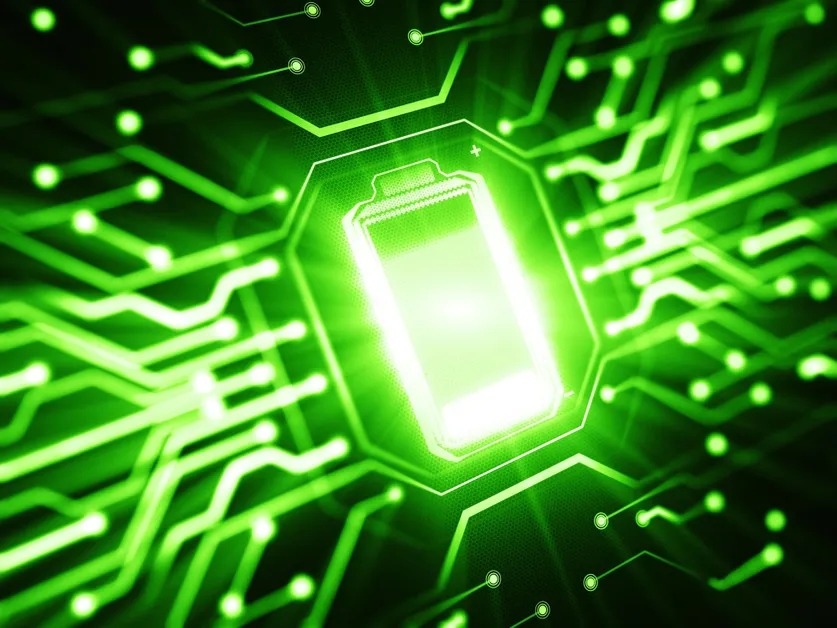博文
瑞士科学家已开发出一种新的一次性纸电池
 精选
精选
||
瑞士科学家已开发出一种新的一次性纸电池
诸平

据《科技日报》(SciTechDaily)网站2022年9月22日报道,研究人员已开发出一种新的一次性纸电池(A New, Disposable Paper Battery Has Been Developed)。研究人员认为,他们的发明可以减少一次性低功率电子产品对环境的负面影响。该电池是水激活的,可应用于各种一次性电子设备。相关研究结果于2022年7月28日已经在《 科学报告》(Scientific Reports)杂志网站发表——Alexandre Poulin, Xavier Aeby, Gustav Nyström. Water activated disposable paper battery. Scientific Reports, volume 12, Article number: 11919 (2022). DOI: 10.1038/s41598-022-15900-5. Published: 28 July 2022. https://www.nature.com/articles/s41598-022-15900-5
此文中概述了一种水活化的一次性纸电池。据科学家称,它可用于为各种低功耗、一次性使用的电子产品供电,例如用于跟踪物品的智能标签、环境传感器和医疗诊断设备,从而最大限度地减少它们对环境的影响。
参与此项研究的有来自瑞士联邦材料科学与技术实验室纤维素和木材材料实验室{Laboratory for Cellulose and Wood Materials, Swiss Federal Laboratories for Materials Science and Technology (Empa), Dübendorf, Switzerland}和苏黎世联邦理工大学卫生科技系(Department of Health Sciences and Technology, ETH Zürich, Zürich, Switzerland)的研究人员。
该电池由古斯塔夫·尼斯特罗姆(Gustav Nyström)及其同事开发,它由至少一个1 cm2的电池组成,由三种墨水印在一张长方形的纸上。纸条上覆盖着氯化钠(NaCl),其较短的一端已浸入蜡中。
纸张的一个平面印有含有石墨片的墨水,用作电池的正极(cathode);另一面印有含锌粉的墨水,作为电池的负极(anode)。
此外,在其它两种墨水之上,纸张的两面都印有含有石墨片和炭黑的墨水。这种墨水将电池的正极和负极连接到位于纸浸蜡端的两条电线。
当加入少量水时,纸中的NaCl会溶解,释放出带电离子。这些离子散布在纸上以激活电池,从而导致电池负端墨水中的锌释放电子。
将电线连接到电气设备上会关闭电路,以便电子可以从负极(通过含石墨和炭黑的墨水、电线和设备)转移到它们所在的正极(含石墨的墨水)转移到周围空气中的氧气中。这些反应产生可用于为设备供电的电流。
为了证明他们的电池能够运行低功耗电子设备,作者将两个电池组合成一个电池,并用它为带有液晶显示器的闹钟供电。对单芯电池的性能分析表明,加入两滴水后,电池在 20 秒内激活,在不连接耗能设备的情况下,达到 1.2 V的稳定电压。
标准AA碱性电池的电压为 1.5 V。一小时后,由于纸张干燥,单节电池的性能显著下降。然而,在再加入两滴水后,它又保持了 0.5 V的稳定工作电压超过一小时。
作者提出,纸和锌的生物降解性可以使他们的电池最大限度地减少一次性低功率电子产品对环境的影响。他们建议,通过最大限度地减少墨水中锌的使用量,可以进一步提高电池的可持续性,这也可以精确控制电池产生的电量。
此研究得到了瑞士国家科学基金会(Swiss National Science Foundation)和瑞士创新之桥发现(Innosuisse BRIDGE Discovery)项目对“绿色智能包装(GREENsPACK)”项目{ Swiss National Science Foundation and Innosuisse BRIDGE Discovery program for the project "GREENsPACK – Green Smart Packaging" (Grant Nr.: 40B2-0_187223/1)}和EMPA对“印刷纸电池”项目(EMPA for funding the project "Printed Paper Batteries")的资助。
上述介绍,仅供参考。欲了解更多信息,敬请注意浏览原文或者相关报道。
We developed a disposable paper battery aiming to reduce the environmental impact of single-use electronics for applications such as point of care diagnosis, smart packaging and environmental sensing. The battery uses Zinc as a biodegradable metal anode, graphite as a nontoxic cathode material and paper as a biodegradable substrate. To facilitate additive manufacturing, we developed electrodes and current collector inks that can be stencil printed on paper to create water-activated batteries of arbitrary shape and size. The battery remains inactive until water is provided and absorbed by the paper substrate, taking advantage of its natural wicking behavior. Once activated, a single cell provides an open circuit potential of 1.2 V and a peak power density of 150 μW/cm2 at 0.5 mA. As a proof of concept, we fabricated a two cell battery and used it to power an alarm clock and its liquid crystal display.
https://blog.sciencenet.cn/blog-212210-1356697.html
上一篇:科学家发现狼可以表现出对人类的依恋
下一篇:首个单晶金属有机钙钛矿光纤